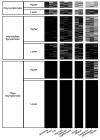Paucity of viral infection symptoms in patients with immune-mediated inflammatory diseases
- PMID: 39773803
- PMCID: PMC11749532
- DOI: 10.1136/bmjopen-2024-088486
Paucity of viral infection symptoms in patients with immune-mediated inflammatory diseases
Abstract
Objectives: Although patients with immune-mediated inflammatory diseases (IMID) are thought to be more susceptible to viral infections, it is unclear whether their presentation differs between patients with IMID and healthy controls. This study aimed to investigate the symptom pattern of common viral infections in patients with IMID and compare it with controls without IMIDs.
Design: A cross-sectional study conducted between 1 February and 30 April 2020, using a questionnaire.
Setting: Seven tertiary regional care centers in Germany, which specialised in the care of patients with IMID (namely, in gastroenterology, dermatology, rheumatology and immunology clinical care).
Participants: One thousand nine hundred nine participants completed the survey (757 patients with IMID; 1152 non-IMID controls).
Primary outcome measure: The occurrence of 11 common viral illness symptoms within the preceding 3 months in patients with IMID and non-IMID controls.
Results: Symptom data were clustered, based on number and co-occurrance, into 3 major clusters and 2 subclusters ranked by the average number of symptoms. Patients with inflammatory bowel disease and psoriasis were significantly overrepresented in the lower-frequency subcluster of the polysymptomatic cluster. Patients with rheumatoid arthritis were overrepresented in the lower-frequency subclusters of the intermediate and oligo-/asymptomatic clusters. Controls were over-represented only in the higher-frequency subclusters of each major cluster where none of the IMIDs were over-represented. Spondyloarthritis and other IMIDs were also overrepresented in the low-frequency subcluster, but the results were not significant. Overall, patients with rheumatoid arthritis patients reported fewer symptoms (rate ratio=0.68, 95% CI, 0.59 to 0.80) than non-IMID controls.
Conclusion: Patients with IMID are over-represented in low-frequency subclusters, even among individuals who have reported a broad range of viral infection symptoms. This pattern suggests that the manifestations of viral infections are different between patients with IMID and controls, thus challenging the accurate and early diagnosis of infections.
Keywords: Respiratory infections; Rheumatology.
© Author(s) (or their employer(s)) 2025. Re-use permitted under CC BY. Published by BMJ Group.
Conflict of interest statement
Competing interests: None declared.
Figures


Similar articles
-
Risk of Developing Additional Immune-Mediated Manifestations: A Retrospective Matched Cohort Study.Adv Ther. 2019 Jul;36(7):1672-1683. doi: 10.1007/s12325-019-00964-z. Epub 2019 May 17. Adv Ther. 2019. PMID: 31102202 Free PMC article.
-
[Epidemiological data and medical care situation of patients with chronic inflammatory diseases in Germany : Real-world evidence on prevalence, disease combinations, care].Z Rheumatol. 2024 Sep;83(7):578-586. doi: 10.1007/s00393-023-01459-7. Epub 2023 Dec 9. Z Rheumatol. 2024. PMID: 38071271 Free PMC article. German.
-
[Prevalence of ten Immune-mediated inflammatory diseases (IMID) in Spain].Rev Esp Salud Publica. 2019 Mar 25;93:e201903013. Rev Esp Salud Publica. 2019. PMID: 30907380 Free PMC article. Spanish.
-
Pregnancy and neonatal outcomes in women with immune mediated inflammatory diseases exposed to anti-tumor necrosis factor-α during pregnancy: A systemic review and meta-analysis.J Autoimmun. 2021 Aug;122:102676. doi: 10.1016/j.jaut.2021.102676. Epub 2021 Jun 11. J Autoimmun. 2021. PMID: 34126302
-
Sympathetic Nerve Hyperactivity in the Spleen: Causal for Nonpathogenic-Driven Chronic Immune-Mediated Inflammatory Diseases (IMIDs)?Int J Mol Sci. 2018 Apr 13;19(4):1188. doi: 10.3390/ijms19041188. Int J Mol Sci. 2018. PMID: 29652832 Free PMC article. Review.
References
-
- Legand A, Briand S, Shindo N, et al. Addressing the Public Health Burden of Respiratory Viruses: The Battle Against Respiratory Viruses (BRaVe) Initiative. Future Virol. 2013;8:953–68. doi: 10.2217/fvl.13.85. - DOI
Publication types
MeSH terms
LinkOut - more resources
Full Text Sources
Medical
Miscellaneous
